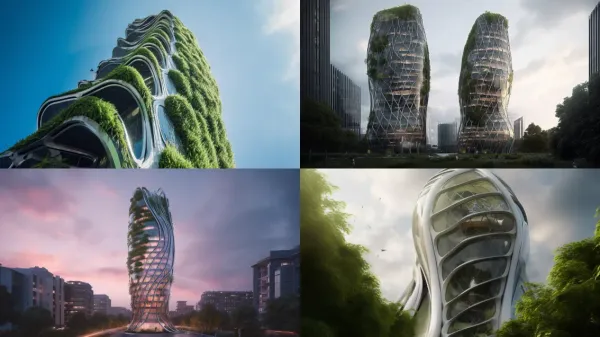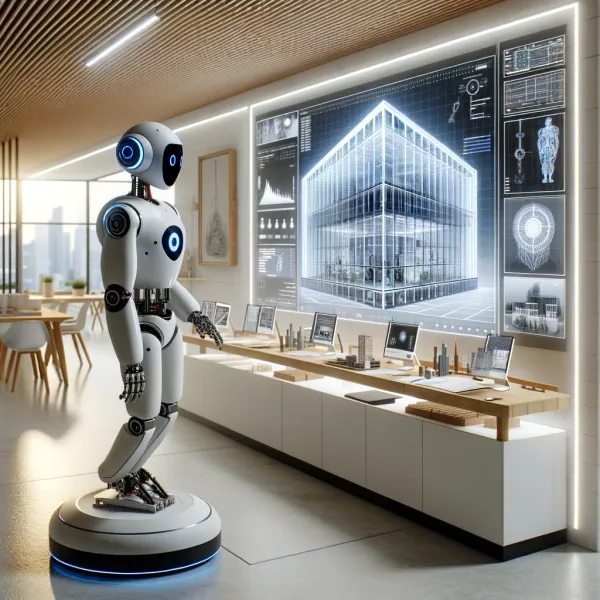Architectural design meeting : The importance of context
When you organize architectural design meeting, it is very important to discuss in the context of the model to get valuable feedbacks. Let's see how for each of the different kinds of architecture design meeting.

This post is an episode of Agile BIM podcast, every week we talk about a new agile practice you can test to improve your coordination and efficiency as an AEC team. Subscribe to not miss any episode!
Hello, welcome to this new version of Agile BIM podcast.
Today is the second episode of the new version of the podcast in English. And we are going to talk about the importance of having a clear context, when sharing the project to get some feedbacks.
What can give some context
Architecture design is a very visual practice. We are not designing something abstract. We are designing a real building that will be built with concrete, with wall, with roof.
So it is necessary at all stages of the project, that we are the more concrete as possible so that people can be really immersed in the project. And have more ideas, more useful feedbacks to give us.
The type of documents that you show to your client, or to the rest of the team, is also quite important to better understand the project.
For example, if you use a 2d drawing, as we traditionally do in architectural design before the BIM. Some people could get confused, by what is the real volume of the building. They could miss some elements that seem self-explanatory for you.
With the 3d model, which is also generally a BIM model. So designed with a software like Revit, Archicad, Vector works or other BIM authoring software. You are able to show the project in a much more realistic way.
Show the model frequently
And it is essential to show the model as much as you can, even if it is still schematic.
It is better to do some more frequent architectural review meeting, even with the model, which is not really complete. So that you can get the first feedback from the other members of the team. And don't lose time to work on hypothesis that will not finally be confirmed
But in practice, how do you currently do the design review? Do you meet people in person? Do you make some remote meeting with tools like Zoom, Google meet and so on? Are you discussing informally with people who work in the same space as you ? Or do you discuss in a collaborative platform, so that anyone can participate when he finds the time.
Whatever the kind of design reviews you finally choose, the context is mandatory to be sure that the feedbacks will be still relevant.
The format of an architectural design meeting
The different format of architectural design reviews meeting have all theirs advantages and drawbacks.
- The in person architectural meeting
For example, the traditional design review meeting, is perfect to put together different projects stakeholders, like the architect, the engineers, the project owner, the BIM manager and the constructor.
But it could be challenging that everybody be available all at the same time. These kinds of design review meeting are also generally longer. Maybe in a different city where most of the team work. Indeed, they are often organized close to the place, where the project is build. After the meeting, it is frequently a challenge to track the status of the topics, that you discussed.
- The remote architectural meeting
The remote or informal meeting within your company is perfect for short discussion. It could then be organized more frequently. They save you a lot of time taking train or transport, and can fit in a day much more easily as you are already in front of your computer.
But they don’t replace the in person design review meetings, where you can deal with more complex topics and to have a greater persuasion effects.
- The asynchronous discussion in the collaborative BIM platform
Finally, the asynchronous discussion in a collaborative BIM platform, is very useful to get feedbacks early. And to structure the discussion in a way it will be later accessible by anyone who participate in the project. It is a must to associate the topic that you talk about, with the 3D context of the project.
How a collaborative platform works
When you use a BIM collaborative platform to discuss with your team. You generally upload the new version of the BIM models in an application available in the Web. When the model is loaded in your browser, you can then navigate in the 3D space and discover the current state of the project. You don’t need to wait for the next meeting, and can start a discussion right away !
If you have any remarks, a topic to discuss or an issue to raise, you can simply add it contextually along with project context.
And this make all the difference ! Imagine, on the contrary, receiving a list of remarks by email. You need, maybe to open an external file, to remind you what they talk about. And find the proper context for each remark. This is quite time-consuming, and you are never sure that all people consulted the same model version.
So thanks to BIM collaborative platforms with a BIM viewer and where you can add some remarks, the interaction between teams could happen continuously and not only during the meetings.
For that reason, I strongly recommend you choose a collaborative platform to centralize and fluidify the discussion about the project.
Conclusion
That was it for today.
I hope it encouraged you to show the model to more people of your team more often. That you understood the benefits of BIM collaborative platforms, if you don’t already use one. See you next week for a next episode of Agile BIM podcast !




